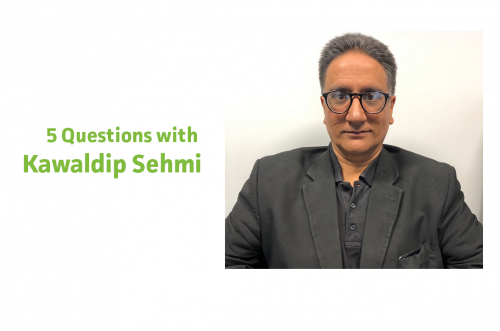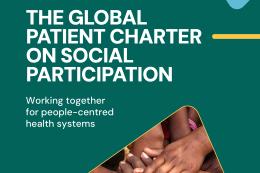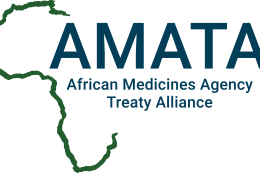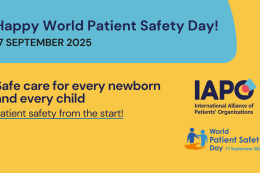IAPO CEO reviews the Essential Medicines List 2019

We are pleased to be invited to contribute to these publications which have a combined monthly circulation and viewershiship of 30,000 members of the global health policy making community.
In the article, Kawaldip reviews the recently released World Health Organization Essential Medicines List analysing what the review means for patients, highlighting its use as an advocacy tool and outlining what more can be done post this launch.
Do take a look, and feel free to share.
What does the addition of new medicines on the 2019 EML update mean for patients?
The inclusion of any medicine, including innovative and specialty medicines, on the World Health Organization’s Essential Medicines List (EML) is good news: it should increase patient access to new treatment options, including to the latest innovative generics and biosimilar medicines. But this will only happen if the necessary steps are taken in each and every country to support delivery and uptake of these medicines. Getting a medicine on the list is an important but relatively tiny first step.
Countries need to strengthen their health systems and work with stakeholders, including patients, public and private funders of health systems, to ensure that sustained funding is available and that the health system infrastructure is robust and resilient if they are to safeguard the effective delivery of essential medicines to the patients and the community.
Even so, it is positive to see that more and more medicines are being included with each EML update, thus keeping abreast of medical innovation while recognizing that there are still unmet medical needs and increasing societal expectations, with more treatments added in areas such as Hepatitis C and Cancer.
How is the EML useful for patient representatives in your advocacy efforts?
There is a sea change in healthcare policy and decision-making as patients are increasingly being asked to support healthcare service development through experience-based co-design and co-creation partnerships. Expert-patients’ engagement on national essential medicines list is slow to catch up with this approach.
It is important to have the patient perspectives on essential medicines list. EML is just the tip of a huge healthcare infrastructure, workforce and resources iceberg. By just concentrating on the EML is like applying a sticky plaster to a compound fracture within the healthcare body.
However, the List is an important guide to what medicines should be available anywhere at any time – these should be seen as the bare minimum that any health system should be able to deliver. It should not become a box-ticking exercise, a bare minimum standard, the delivery of which absolves the State’s obligation to do much better. But, at the end of the day, the patient-physician partnership must be able to decide what is the most appropriate treatment for patients. For patient organizations, one idea is that the EML can be used along with individual country medicines lists to advocate for ‘missing’ treatments.
They can also benchmark their own country list with t hose used by neighboring countries, or countries with similar medical needs/health systems. We will be informing, educating and developing capacity within patient organizations to work towards this partnership-based approach now that the new list has been released. We need to do more work post-launch of EMLs.
What do you mean by doing more on “post-launch” of EML?
This year we are going to be marking the 1st World Patient safety Day. Medication safety is a central pillar in the WHO Director General’s Global action on patient safety. When new medicines are included on the list, it is crucial that clear guidance be given to patients and health professionals on how they should be properly utilized (i.e., treatment guidelines, safe medication practices) and any necessary supporting systems, such as disease surveillance systems/ registries, pharmacovigilance systems, diagnosis, patient monitoring, adherence, and management of comorbidities. Proper utilization of medicines is an issue very close to my heart and at the core of IAPO’s work. Unsafe medication practices and medication errors have become a global public health problem. The number of patients either injured, disabled or killed while accessing unsafe healthcare has become a huge global concern.
As one patient advocate said at the 72nd World Health Assembly: “In my country, people are afraid to go to hospitals as they think they will come out in a coffin or with a severe disability. Hospitals and healthcare services stand the risk of being empty if the community does not trust them.” I’m therefore delighted that the WHO Member States from all 194 countries endorsed the establishment of a World Patient Safety Day to be marked annually on 17 September and officially included on the WHO list of health dates.
WHO’s Report on Pricing of cancer medicines and its impacts released last year makes considerations about different pricing approaches to cancer medicines listed on the EML. What is IAPO’s view on this topic?
Ultimately, every patient must be able to access and afford the healthcare services they need – this is also one of the five principles outlined in IAPO’s Declaration on Patient Centred Healthcare. Our vision is that the needs of patients are placed at the center of all healthcare decision-making and, equally importantly, that patients have a direct role as partners in all matters from policy to individual choices. I think we all agree that there is no point in innovation if people cannot benefit from it.
But, equally, we should not lose sight of the fact that many medicines such as antibiotics, malaria treatments and statins albeit relatively cheap still do not reach patients who need them. For example, all the basic hypertension medicines are generic, inexpensive, safe and effective; they have been used in high income countries for more than half a century, but they are still not being used routinely in low income countries. In the case of oncology medicines, because of the complexities associated with cancer treatment, issues with supply chain integrity, insufficient health workers, low capacity for diagnosis and overall infrastructure limitations have to be part of the debate on access, along with pricing.
Looking ahead, what would you like to see in the next EML update?
A multi-stakeholder approach to the next EML update is key, starting with greater patient engagement and participation. Engaging patients in health policy decision-making is essential in order to ensure that policies adequately reflect patient and carer needs, preferences and capabilities. It is also important that the processes around the EML are open, inclusive and impartial. Deliberations of the advisory working groups established to advise the Expert Committee would be significantly improved with a wider membership, including patient organizations, National Regulatory Agencies, and NSAs, as official interlocutors with the WHO. Especially for innovative medicines, involving regulators in the discussion is key, as regulators are the ones reviewing the most detailed data regarding safety and efficacy of these medicines.



